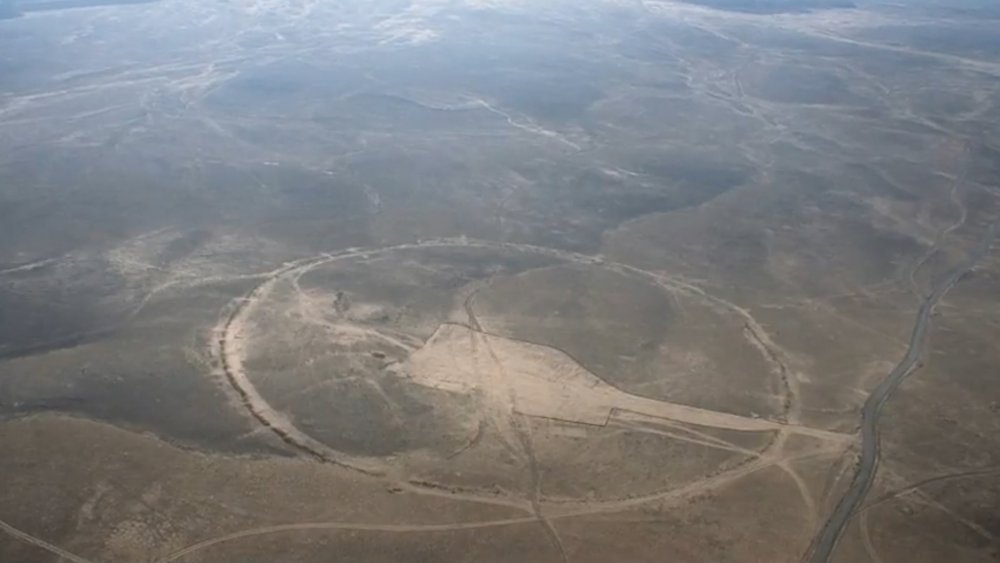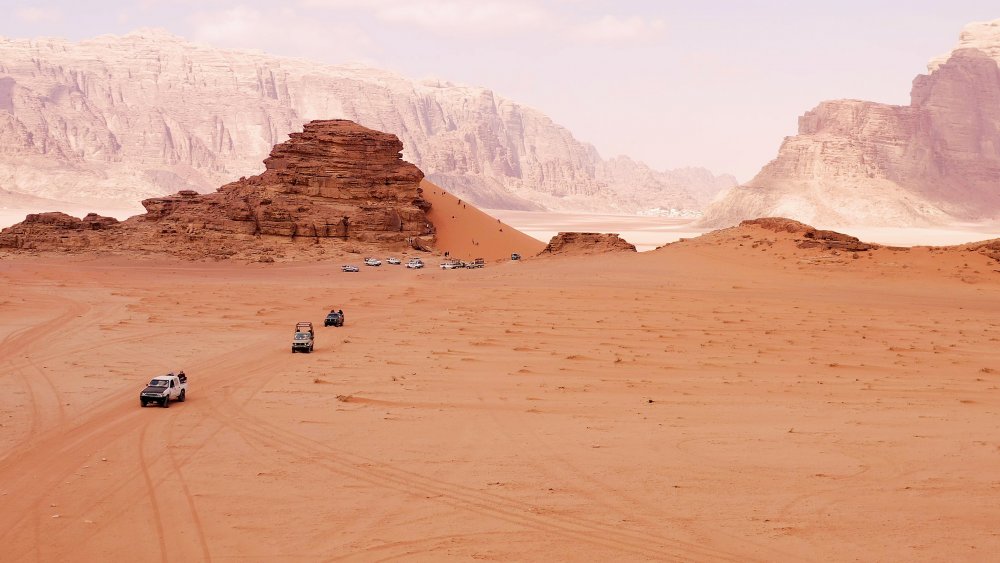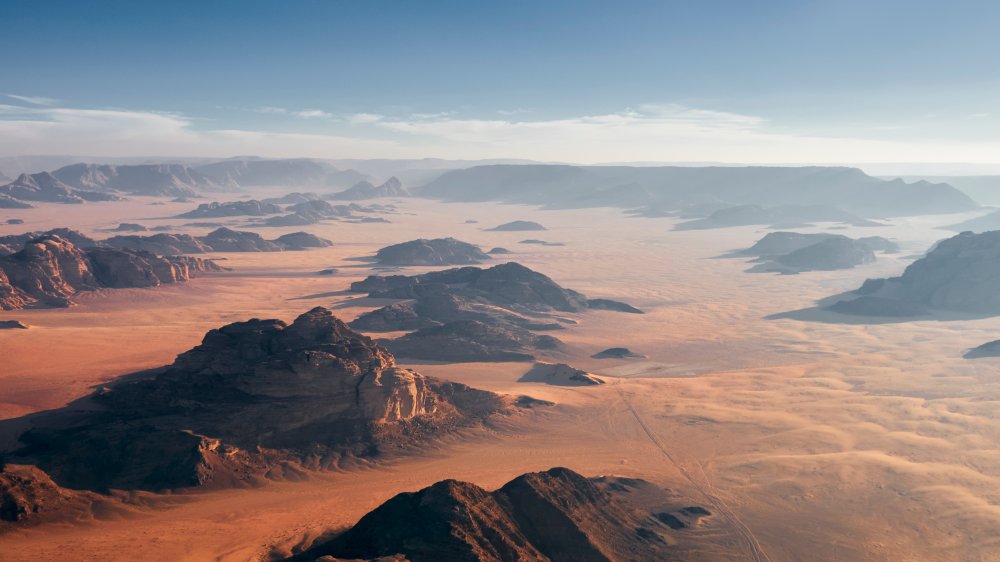The Mystery Behind The Big Circles
Human structures created with stone — think Stonehenge, perhaps — continue to intrigue and mystify. Sometimes, it's not until we get up in the air that we see how monumental things are. The Nazca Lines in Peru, for example — described by History as giant geoglyphs, designs etched into the ground — are so impressive when seen from the sky. An aerial view can also reveal the extent of strange, mysterious markings.
This is what scientists discovered about the Big Circles in Jordan and Syria. According to LiveScience, the circles were first found in the 1920s, but the size was not fully understood until 2014. There are about 12 circles, 11 in Jordan and one in Syria, and people don't exactly know what they're for.
The circles were first spotted by aircraft in 1920 by a British commander named Lionel Rees, relates The Washington Post. Rees wrote about the three circles he saw for the journal Antiquity but, despite how mysterious the rings were, they inspired little research until a long-term photography project provided impetus. Smithsonian Magazine reported that David Kennedy, a researcher from the University of Western Australia, documented archaeological sites in the Middle East. As he flew over the region, he saw the circles Rees described, and more of them. Kennedy said it wasn't until recently that people flew over most of the area to really document the landscape, so the circles were easily missed.
Some of the circles have been destroyed
The circles literally embody their name. They are mostly 1,312 feet (400 meters) in diameter and made up of stones piled a few feet high. The rings appear in almost every type of terrain, not just in the desert. Kennedy said he spotted the circles in the desert, craggy mountains, and along hills.
At first, The Washington Post said, researchers thought the circles were confined to Jordan; after all, that's where most of the circles were discovered. But other flights confirmed there was another one in Syria, more than 300 kilometers (186.4 miles) from the ones in Jordan, and they feel there could be more. Unfortunately, the Syrian circle and another in Jordan had been destroyed, so scientists studied old satellite photos, said LiveScience.
Archaeologists who took an interest in the Big Circles theorize these are around 2,000 years old. While aerial shots offer perspective, researchers said more investigation on the ground would be helpful, but they've had some difficulty reaching some of the sites. This is understandable; the Syrian Big Circle was located in Homs, which became a battleground during the Syrian War. LiveScience noted a team from Durham University managed to visit the Homs Big Circle before it was entirely destroyed. They didn't have much time in the area, but did manage to make crucial studies of the Big Circle before it was completely demolished.
They're hard to study
Since scientists had trouble getting to the Big Circles for full archaeological digs, they only have a few theories for their use so far.
Aerial photographs show at least one of the circles has an ancient Roman road running through it, so it's possible that these are older than the Roman empire and may even be older than the original estimate of 2,000 years old. Unearthed wrote the Big Circles don't have an entrance, but rather consist of a completely closed circle. Some circles have mounds inside, which researchers think might have been burial domes. Other archaeologists who managed to visit the Syrian circle believe it could've been a settlement. The circle's positioning, they said, gave someone a panoramic view of the basin where other settlements and crops were grown. Other academics feel the Big Circles were not a creation of a new, undiscovered ancient civilization, but rather a cultural practice that hasn't been understood yet.
The Middle East photography project that sparked interest in the Big Circles has also discovered other ancient landmarks in the region. According to LiveScience, the team has found other stone structures that look like wheels, kites, pendants, and very tall walls. As for the Big Circles, until access to the sites can be fully secured, scientists only have aerial and satellite photographs to study. For now, they remain a mystery.


